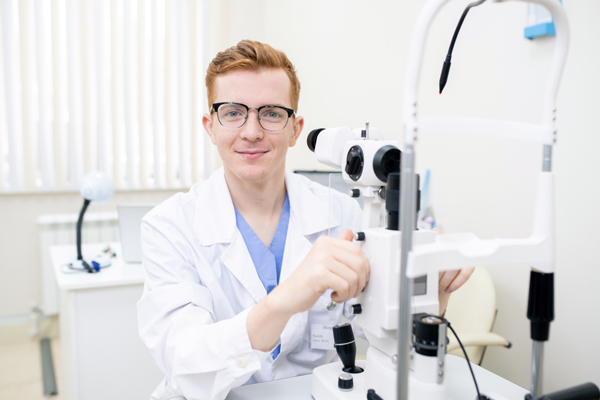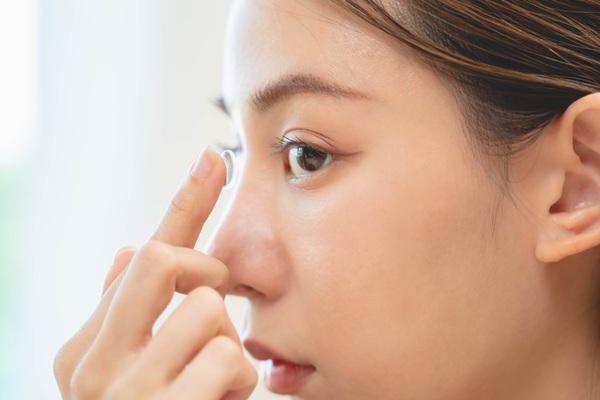9 Eye Myths Explained by an Eye Doctor

Curious about the health of your eyes? Continue reading to learn an eye doctor's perspective on common myths about eye health. There are many myths about eye health and vision, so knowing the actual facts can help a patient get the proper treatment needed for optimum eye health.
9 Common eye myths explained by an eye doctor
Here are some common misconceptions about vision and eye health, as well as the truth for each myth as explained by an eye doctor:
Myth 1: People’s eyes are full-size when they are born
The fact is that eyes are proportionally sized throughout a person’s life, from birth to old age. The changing size of the eye can explain why changes in vision occur from time to time.
Myth 2: A brown-eyed child cannot be born to two blue-eyed parents
In truth, brown eyes are a dominant genetic trait and can show up in any generation, including as the child of two blue-eyed parents, although it is less common than when one parent has dark eyes.
Myth 3: For improved vision, eat lots of carrots
While eating carrots can improve health in many ways, the vitamin A in carrots is no better for eye health than the vitamin A that exists in other foods, such as milk, apricots, liver, spinach, or broccoli, to name a few.
Myth 4: Reading in low light or using a computer for an extended time is harmful to the eyes
Long stints on the computer will not affect vision or overall eye health. When a person is concentrating on a screen, whether a computer, tablet, phone, or other devices, or reading for long periods, the eyes tend to blink less, which can cause dry eyes. Taking a break occasionally can help prevent fatigue and eyestrain. Using moisturizing eye drops can also help make the eyes more comfortable.
Myth 5: If someone crosses their eyes often, they will stay that way
Eye muscles are resilient and will not stay crossed, although if eyes are crossing involuntarily, a checkup should be scheduled with an eye doctor right away to check for underlying problems.
Myth 6: You don't need an eye exam unless problems exist
The fact is that regular eye exams can catch problems early on when intervention and treatment can make a difference in eye conditions. Eyesight can degrade over time, sometimes slowly enough as to be unnoticeable. Eye exams can diagnose vision changes and make eyesight more comfortable.
Obviously, there are many untrue ideas about vision and eye health that can prevent a person from seeking the necessary care. People might also worry when changes occur not realizing that many are changes expected with age, but that can still require attention. An experienced eye doctor can sort things out.
Myth 7: Eye problems are to blame for many learning impairments
Reading, math, and comprehension difficulties are all signs that a kid may have a learning impairment. No link has been found between eye issues and learning difficulties. Eye exercises do not help with learning difficulties, since they result from a malfunction in the brain's ability to comprehend what it perceives. Poor eyesight might be misinterpreted as a learning disability in certain people. Some people may have difficulty reading because the text seems hazy. If a child has been diagnosed as having a learning disorder, a learning expert and an eye care practitioner can determine whether there are any visual issues.
Myth 8: Sitting too close to the TV can affect children's eyes
Children's eyesight is better suited for close distances than adults. Studies have shown that a child's eyesight is not harmed by sitting too near to the screen, nor does reading a book held extremely near to the face. As children become older, they tend to cease this habit. However, children with nearsightedness may have to sit close to the television to view the images well. Regular eye examinations for children are recommended to detect any vision issues early on.
Myth 9: The wrong eyeglasses might hurt your vision
The purpose of wearing eyeglasses is to improve your eyesight. Wearing eyeglasses that do not fit properly will not harm your vision. However, eye strain is possible. The eyes may become sore and the vision may be hazy. A headache is another possibility, but taking off the glasses can help. In most cases, it is only irritating to have the incorrect prescription lenses for your eyeglasses.
The bottom line
Getting regular checkups from an eye doctor and receiving proper treatment can help maintain optimum eye health and vision. Contact us today to schedule an appointment.
Get more information here: https://www.texasoptical.net or call Texas Optical at (214) 771-7333
Check out what others are saying about our services on Yelp: Read our Yelp reviews.
Recent Posts
For those living with diabetes, undergoing a diabetic eye exam is one of the most important steps in protecting their vision and overall eye health. High blood sugar levels can lead to a range of complications, including conditions that damage the eyes over time. These exams help detect these issues before they become serious, allowing…
Contact lenses provide clear vision and convenience for individuals who prefer an alternative to eyeglasses. However, proper care and maintenance are essential to prevent infections, irritation, and eye damage. Neglecting hygiene practices can lead to serious eye conditions, including corneal ulcers and keratitis. Understanding how to clean, store, and handle contact lenses ensures long-term eye…
Maintaining eye health and preventing long-term issues is the result of consistent and quality vision care. Many people focus on overall wellness but may overlook daily habits that support healthy eyesight. However, taking simple steps each day can protect vision, reduce eye strain, and prevent future complications. By making eye health a priority, it is…
Prescription contacts provide vision correction, comfort, and convenience for those who do not want to wear glasses. However, caring for and wearing contacts takes some getting used to. Learning to insert, remove, and maintain them will help ensure a comfortable and safe experience.Not all contact lenses are the same, and choosing the right pair is…


